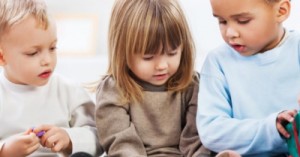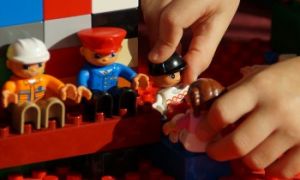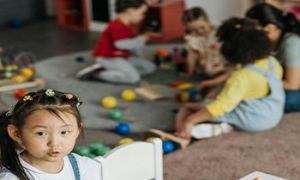Creating open-ended observations in early childhood settings is all about capturing the richness of a child’s experience without judgment, assumptions, or leading interpretations. These observations invite reflection, celebrate authentic voice, and support responsive planning. The following article is a guide to help you craft them effectively.
What Are Open-Ended Observations?
Open-ended observations:
- Describe rather than evaluate: Focus on what the child did, said, or expressed—not what you think it means.
- Invite interpretation: Leave space for educators, families, or even children to reflect and add meaning.
- Support child voice: Capture language, gestures, and choices that reflect the child’s perspective.
How to Write Them: A Step-by-Step Guide
1. Start with the context
Include time, setting, materials, and social dynamics.
Example: “At 9:15am in the outdoor play area, Ava stood beside the water trough with two plastic cups.”
2. Describe actions and language
Use objective, sensory-rich language. Avoid adjectives like “happy,” “creative,” or “confident” unless the child expresses them.
Example: “She poured water from one cup to the other, watching closely. ‘It’s going down!’ she said.”
3. Capture interactions
Note how the child engages with peers, adults, or the environment.
Example: “When Leo approached, Ava handed him a cup and said, ‘You do it now.’”
4. Include pauses, gestures, and expressions
These often reveal thinking, emotion, or intention.
Example: “Ava paused, tilted her head, and looked at the water level before pouring again.”
5. End with an open reflection or question
This scaffolds inquiry and planning.
Example: “What might Ava be exploring about volume and flow?”
Tips for Authenticity and Depth
-
Use the child’s exact words when possible.
-
Avoid assumptions like “She was pretending to be a doctor”—instead say “She held the stethoscope to her chest and said, ‘I’m checking my heart.’”
-
Link to learning later, not in the observation itself—keep the raw moment intact.
Open Ended Examples For Different Age Groups
Here are some open-ended observation examples tailored to different age groups and developmental domains.
Infant Example (Sensory Exploration)
Observation: “Luca lay on the soft mat, reaching both hands toward the hanging fabric strips. His fingers brushed the textures slowly. He paused, then turned his head toward the light filtering through the window.”
Open Reflection: “What might Luca be discovering through touch and light?”
Toddler Example (Social Interaction)
Observation: “Maya stood beside the block tower, watching as Eli added a piece. She picked up a block, held it out, and said, ‘Here, Eli.’ When the tower fell, both children looked at each other and laughed.”
Open Reflection: “How do Maya and Eli express collaboration and shared joy?”
Preschooler Example (Creative Expression)
Observation: “During drawing time, Zara chose a black marker and began making zigzag lines across the page. She said, ‘This is the storm. The thunder is loud.’ She added blue swirls and whispered, ‘Now it’s raining.’”
Open Reflection: “What emotions or stories might Zara be expressing through her artwork?”
Outdoor Play Example (Risk and Agency)
Observation: “Jasper climbed halfway up the rope ladder, paused, and looked down. He called out, ‘I’m going up high!’ Then he climbed one more rung and said, ‘I did it!’”
Open Reflection: “What does this moment tell us about Jasper’s sense of agency and confidence?”
Child Voice Example (Emotional Literacy)
Observation: “When the music stopped, Aaliyah said, ‘I feel sad when the song goes away.’ She sat quietly, then asked, ‘Can we play it again so my heart feels happy?’” Open Reflection: “How might Aaliyah be using music to regulate and express emotion?”
Further Reading
Q: How Do I Write An Observation?
Simplified Observation & Planning Cycles
Q: How Do I Come Up With Extension Ideas During Observations
Observations in Childcare
Different Types Of Observation Methods
Anecdotal Records In Childcare
Q: What Is A Sociogram
Practical Examples Of Anecdotal Record Observation For Babies
Q: What Is A Narrative Observation
Event Sample Observations In Childcare
Q: What Is A Jotting Observation?
Jotting Observations In Childcare
Writing Observations For Babies







 Here is the list of the EYLF Learning Outcomes that you can use as a guide or reference for your documentation and planning. The EYLF
Here is the list of the EYLF Learning Outcomes that you can use as a guide or reference for your documentation and planning. The EYLF The EYLF is a guide which consists of Principles, Practices and 5 main Learning Outcomes along with each of their sub outcomes, based on identity,
The EYLF is a guide which consists of Principles, Practices and 5 main Learning Outcomes along with each of their sub outcomes, based on identity, This is a guide on How to Write a Learning Story. It provides information on What Is A Learning Story, Writing A Learning Story, Sample
This is a guide on How to Write a Learning Story. It provides information on What Is A Learning Story, Writing A Learning Story, Sample One of the most important types of documentation methods that educators needs to be familiar with are “observations”. Observations are crucial for all early childhood
One of the most important types of documentation methods that educators needs to be familiar with are “observations”. Observations are crucial for all early childhood To support children achieve learning outcomes from the EYLF Framework, the following list gives educators examples of how to promote children's learning in each individual
To support children achieve learning outcomes from the EYLF Framework, the following list gives educators examples of how to promote children's learning in each individual Reflective practice is learning from everyday situations and issues and concerns that arise which form part of our daily routine while working in an early
Reflective practice is learning from everyday situations and issues and concerns that arise which form part of our daily routine while working in an early Within Australia, Programming and Planning is reflected and supported by the Early Years Learning Framework. Educators within early childhood settings, use the EYLF to guide
Within Australia, Programming and Planning is reflected and supported by the Early Years Learning Framework. Educators within early childhood settings, use the EYLF to guide When observing children, it's important that we use a range of different observation methods from running records, learning stories to photographs and work samples. Using
When observing children, it's important that we use a range of different observation methods from running records, learning stories to photographs and work samples. Using This is a guide for educators on what to observe under each sub learning outcome from the EYLF Framework, when a child is engaged in
This is a guide for educators on what to observe under each sub learning outcome from the EYLF Framework, when a child is engaged in The Early Years Learning Framework describes the curriculum as “all the interactions, experiences, activities, routines and events, planned and unplanned, that occur in an environment
The Early Years Learning Framework describes the curriculum as “all the interactions, experiences, activities, routines and events, planned and unplanned, that occur in an environment


